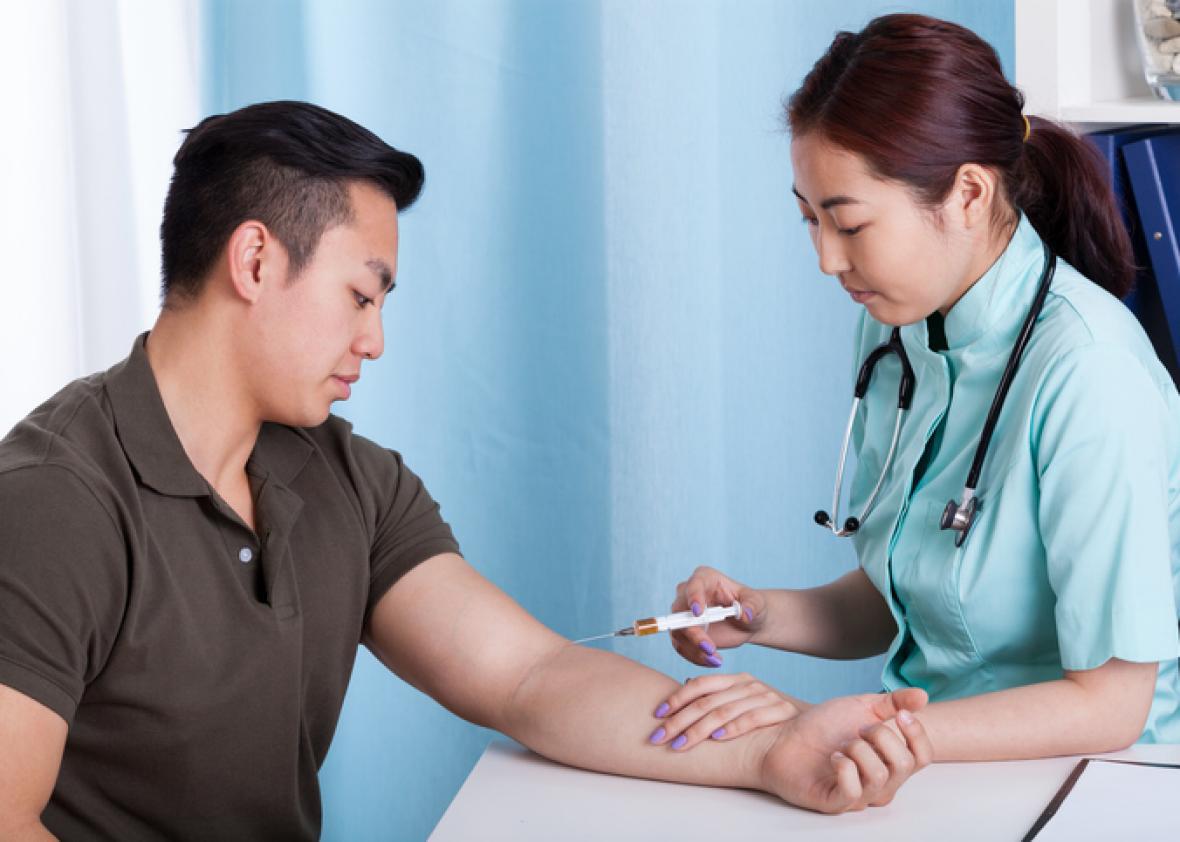All preteens should get vaccinated against human papillomavirus, according to the Centers for Disease Control and Prevention. Many strains of HPV cause genital warts and several kinds of cancer; if people get the vaccine before they’re exposed to one of these strains through sexual activity, they have a better shot at avoiding cervical, anal, and oropharyngeal cancers.
But what about people who passed the upper age limit before the vaccine was ready or recommended? Health reporter Jake Harper of WFYI in Indianapolis writes that he only learned about HPV in college, at age 21, when his then-girlfriend got inoculated. At the time, the CDC hadn’t yet recommended the vaccine for boys. Though more U.S. men get oral cancers than women get cervical cancers, the vaccine was marketed toward girls as a cervical cancer prevention tool. When it was finally marketed to boys and their parents, it was mainly hailed as a way to prevent the spread of HPV to girls, who could get cervical cancer.
Harper, now 29, is scared that he’s at risk of developing a cancer he could have prevented with a vaccine. His fear was exacerbated by a recent ad campaign for Merck, which owns the Gardasil HPV vaccine, that features kids asking their parents why they didn’t get them vaccinated against cancer. But since he was older than the recommended age range and was already sexually active, he wondered if it was too late.
The CDC only recommends the vaccine for young women up to age 26 and young men up to age 21. (Men who have sex with men or who have compromised immune systems can get it through age 26.) Kids can start getting it as young as age 9, but it’s suggested for preteens aged 11 to 12, which is when it works best and can be lumped in with other necessary vaccinations. (It’s so effective at this young age that these adolescents only need two doses of the vaccine, rather than the originally recommended three.) At this stage, kids usually aren’t sexually active, so they’re unlikely to have been exposed to HPV.
But Harper found that the vaccine could still do him some good. While about 80 percent of sexually active people have been infected with some strain of HPV by age 45, more than 40 different strains of HPV can be spread through sexual contact. This means that not every person who’s contracted or spread HPV is dealing with the same viral strain. The latest iteration of Gardasil protects against just nine of the most common and high-risk types of HPV, but the chance of someone with an average number of sex partners encountering all nine by age 29 is small. Even if Harper has contracted HPV in the past without knowing it, he could still be at risk of contracting a different strain that might cause him cancer. The vaccine would mitigate some of that risk.
Since he’s outside the CDC’s guidelines for HPV vaccination, Harper must pay out of pocket for the shots; he writes that it’ll cost him nearly $400 for the three doses. Getting vaccinated may keep him from getting cancer. Perhaps more important, it’ll keep him from spreading HPV to his sex partners (and their sex partners, and their sex partners), which is the main goal of vaccination campaigns. With more studies on how the vaccine works in people over age 26, the CDC could find reason to recommend it for these older adults. But if parents would just vaccinate their kids instead of protesting HPV vaccination requirements, future adults won’t have to make this expensive decision.
